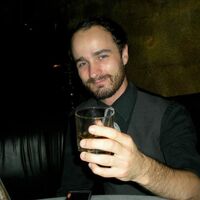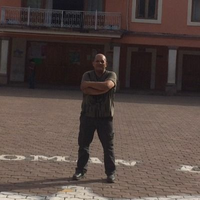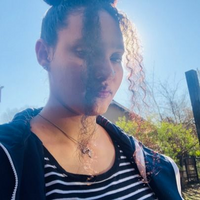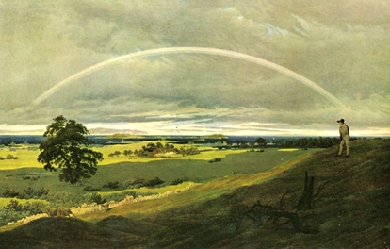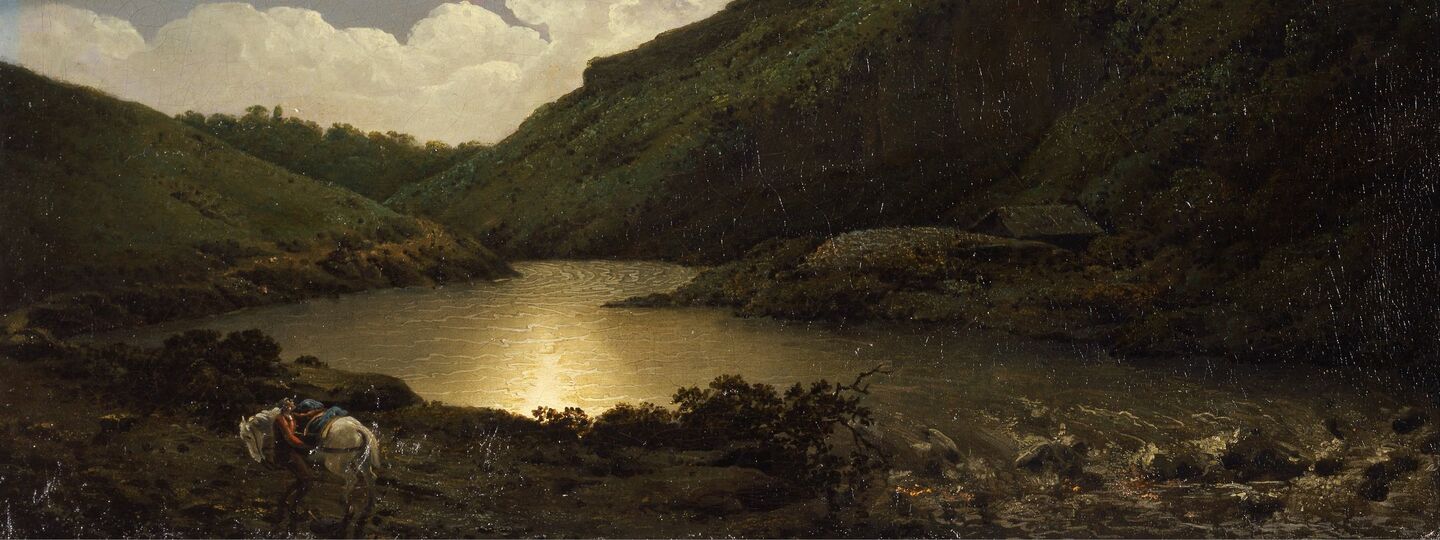
Info
Matlock Tor by Moonlight
Joseph Wright of Derby
1777–80
Yale Center for British Art
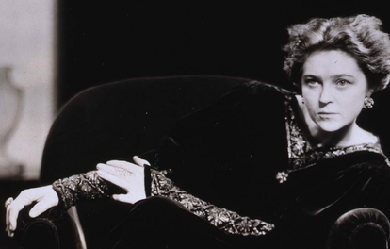
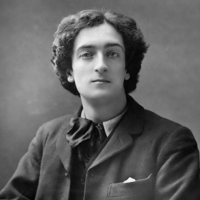
Richard Le Gallienne (20 January 1866– 15 September 1947) was an English author and poet. The American actress Eva Le Gallienne (1899–1991) was his daughter, by his second marriage. Life and career He was born in Liverpool. He started work in an accountant’s office, but abandoned this job to become a professional writer. The book My Ladies’ Sonnets appeared in 1887, and in 1889 he became, for a brief time, literary secretary to Wilson Barrett. He joined the staff of the newspaper The Star in 1891, and wrote for various papers by the name Logroller. He contributed to The Yellow Book, and associated with the Rhymers’ Club. His first wife, Mildred Lee, died in 1894. They had one daughter, Hesper. In 1897 he married the Danish journalist Julie Norregard, who left him in 1903 and took their daughter Eva to live in Paris. Le Gallienne subsequently became a resident of the United States. He has been credited with the 1906 translation from the Danish of Peter Nansen’s Love’s Trilogy; but most sources and the book itself attribute it to Julie. They were divorced in June 1911. On October 27, 1911, he married Mrs. Irma Perry, née Hinton, whose previous marriage to her first cousin, the painter and sculptor Roland Hinton Perry, had been dissolved in 1904. Le Gallienne and Irma had known each other for some time, and had jointly published an article as early as 1906. Irma’s daughter Gwendolyn Perry subsequently called herself “Gwen Le Gallienne”, but was almost certainly not his natural daughter, having been born in 1900. Le Gallienne and Irma lived in Paris from the late 1920s, where Gwen was by then an established figure in the expatriate bohéme (see, e.g.) and where he wrote a regular newspaper column. Le Gallienne lived in Menton on the French Riviera during the 1940s. During the Second World War Le Gallienne was prevented from returning to his Menton home and lived in Monaco for the rest of the war. Le Gallienne’s house in Menton was occupied by German troops and his library was nearly sent back to Germany as bounty. Le Gallienne appealed to a German officer in Monaco who allowed him to return to Menton to collect his books. During the war Le Gallienne refused to write propaganda for the local German and Italian authorities, and with no income, once collapsed in the street due to hunger. In later times he knew Llewelyn Powys and John Cowper Powys. Asked how to say his name, he told The Literary Digest the stress was “on the last syllable: le gal-i-enn’. As a rule I hear it pronounced as if it were spelled ‘gallion,’ which, of course, is wrong.” (Charles Earle Funk, What’s the Name, Please?, Funk & Wagnalls, 1936.) A number of his works are now available online. He also wrote the foreword to “The Days I Knew” by Lillie Langtry 1925, George H. Doran Company on Murray Hill New York. Works * My Ladies’ Sonnets and Other Vain and Amatorious Verses (1887) * Volumes in Folio (1889) poems * George Meredith: Some Characteristics (1890) * The Book-Bills of Narcissus (1891) * English Poems (1892) * The Religion of a Literary Man (1893) * Robert Louis Stevenson: An Elegy and Other Poems (1895) * Quest of the Golden Girl (1896) novel * Prose Fancies (1896) * Retrospective Reviews (1896) * Rubaiyat of Omar Khayyam (1897) * If I Were God (1897) * The Romance Of Zion Chapel (1898) * In Praise of Bishop Valentine (1898) * Young Lives (1899) * Sleeping Beauty and Other Prose Fancies (1900) * The Worshipper Of The Image (1900) * The Love Letters of the King, or The Life Romantic (1901) * An Old Country House (1902) * Odes from the Divan of Hafiz (1903) translation * Old Love Stories Retold (1904) * Painted Shadows (1904) * Romances of Old France (1905) * Little Dinners with the Sphinx and other Prose Fancies (1907) * Omar Repentant (1908) * Wagner’s Tristan and Isolde (1909) Translator * Attitudes and Avowals (1910) essays * October Vagabonds (1910) * New Poems (1910) * The Maker of Rainbows and Other Fairy-Tales and Fables (1912) * The Lonely Dancer and Other Poems (1913) * The Highway to Happiness (1913) * Vanishing Roads and Other Essays (1915) * The Silk-Hat Soldier and Other Poems in War Time (1915) * The Chain Invisible (1916) * Pieces of Eight (1918) * The Junk-Man and Other Poems (1920) * A Jongleur Strayed (1922) poems * Woodstock: An Essay (1923) * The Romantic '90s (1925) memoirs * The Romance of Perfume (1928) * There Was a Ship (1930) * From a Paris Garret (1936) memoirs * The Diary of Samuel Pepys (editor) References Wikipedia—https://en.wikipedia.org/wiki/Richard_Le_Gallienne
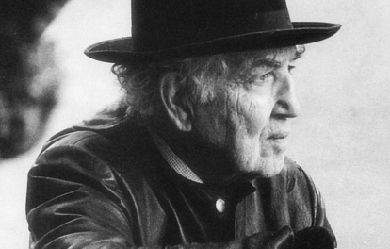
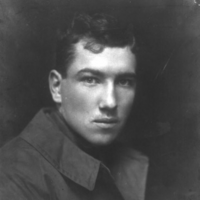
On July 24, 1895, Robert Graves was born in Wimbledon, near London. His father, Alfred Perceval Graves, was a Gaelic scholar and minor Irish poet. His mother, Amalie von Ranke Graves, was a relation of Leopold von Ranke, one of the founding fathers of modern historical studies. One of ten children, Robert was greatly influenced by his mother's puritanical beliefs and his father's love of Celtic poetry and myth. As a young man, he was more interested in boxing and mountain climbing than studying, although poetry later sustained him through a turbulent adolescence. In 1913 Graves won a scholarship to continue his studies at St. John's College, Oxford, but in August 1914 he enlisted as a junior officer in the Royal Welch Fusiliers. He fought in the Battle of Loos and was injured in the Somme offensive in 1916. While convalescing, he published his first collection of poetry, Over the Brazier. By 1917, though still an active serviceman, Graves had published three volumes. In 1918, he spent a year in the trenches, where he was again severely wounded. In January 1918, at the age of twenty-two, he married eighteen-year-old Nancy Nicholson, with whom he was to have four children. Traumatized by the war, he went to Oxford with his wife and took a position at St. John's College. Graves's early volumes of poetry, like those of his contemporaries, deal with natural beauty and bucolic pleasures, and with the consequences of the First World War. Over the Brazier and Fairies and Fusiliers earned for Graves the reputation as an accomplished war poet. After meeting the American poet and theorist Laura Riding in 1926, Graves's poetry underwent a significant transformation. Douglas Day has written that the "influence of Laura Riding is quite possibly the most important single element in [Graves's] poetic career: she persuaded him to curb his digressiveness and his rambling philosophizing and to concentrate instead on terse, ironic poems written on personal themes." In 1927, Graves and his first wife separated permanently, and in 1929 he published Goodbye to All That, an autobiography that announced his psychological accommodation with the residual horror of his war experiences. Shortly afterward, he departed to Majorca with Laura Riding. In addition to completing many books of verse while in Majorca, Graves also wrote several volumes of criticism, some in collaboration with Riding. The couple cofounded Seizin Press in 1928 and Epilogue, a semiannual magazine, in 1935. During that period, he evolved his theory of poetry as spiritually cathartic to both the poet and the reader. Although Graves claimed that he wrote novels only to earn money, it was through these that he attained status as a major writer in 1934, with the publication of the historical novel I, Claudius, and its sequel, Claudius the God and His Wife Messalina. (During the 1970's, the BBC adapted the novels into an internationally popular television series.) At the onset of the Spanish Civil War in 1936, Graves and Riding fled Majorca, eventually settling in America. In 1939, Laura Riding left Graves for the writer Schuyler Jackson; one year later Graves began a relationship with Beryl Hodge that was to last until his death. It was in the 1940s, after his break with Riding, that Graves formulated his personal mythology of the White Goddess. Inspired by late nineteenth-century studies of matriarchal societies and goddess cults, this mythology was to pervade all of his later work. After World War II, Graves returned to Majorca, where he lived with Hodge and continued to write. By the 1950s, Graves had won an enormous international reputation as a poet, novelist, literary scholar, and translator. In 1962, W. H. Auden went as far as to assert that Graves was England's "greatest living poet." In 1968, he received the Queen's Gold Medal for Poetry. During his lifetime he published more than 140 books, including fifty-five collections of poetry (he reworked his Collected Poems repeatedly during his career), fifteen novels, ten translations, and forty works of nonfiction, autobiography, and literary essays. From 1961 to 1966, Graves returned to England to serve as a professor of poetry at Oxford. In the 1970s his productivity fell off; and the last decade of his life was lost in silence and senility. Robert Graves died in Majorca in 1985, at the age of ninety. Poetry * Over the Brazier (1916) * Goliath and David (1917) * Fairies and Fusiliers (1918) * Treasure Box (1920) * Country Sentiment (1920) * The Pier-Glass (1921) * Whipperginny (1923) * To Whom Else? Deyá (1931) * The Poems of Robert Graves (1958) * Man Does, Woman Is (1964) * Love Respelt (1966) * Poems About Love (1969) * Love Respelt Again (1969) * Poems: Abridged for Dolls and Princes (1971) * Poems 1970-1972 (1973) * New Collected Poems (1977) * The Complete Poems, ed. Beryl Graves and Dunstan Ward (2000) References Poets.org - www.poets.org/poet.php/prmPID/193


Greetings ladies and gentlemen. Welcome to my page. Thank you for taking your time to read my poetry. It's out of the normal styles of writing because it is meant to express my darkest feelings. Please leave your comments if you like what you read. I love to write dark and mysterious types of poetry. Please support me as I continue to write to help me release the emotions I built up inside me. I do hope everyone that reads this respects and understands the personal emotions that comes through my poetry. It is not meant to be altered by any means or taken. It has special meaning to me of what I write and what I express is all true. My current interests and hobbies are Ball Jointed Dolls, Poetry, Art of all forms, Role Playing Games, Playing Guitar, Painting, Drawing, and Writing. I get my inspiration while living in depression through my life, art, and music.
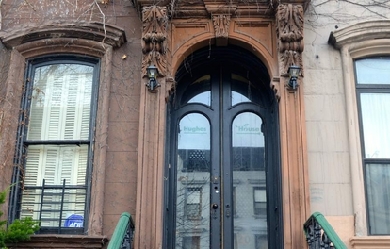
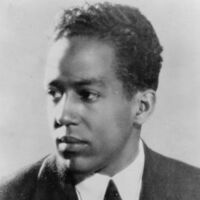
James Mercer Langston Hughes (February 1, 1902 – May 22, 1967) was an American poet, social activist, novelist, playwright, and columnist. He was one of the earliest innovators of the then-new literary art form jazz poetry. Hughes is best known for his work during the Harlem Renaissance. He famously wrote about the period that “the negro was in vogue” which was later paraphrased as “when Harlem was in vogue”.
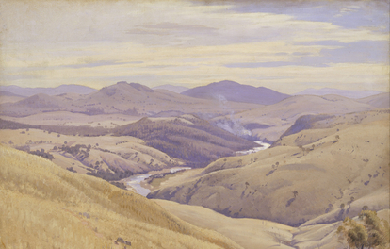
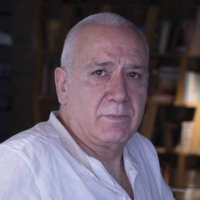
Alexis karpouzos was born in Athens on April 9, 1967, after attending philosophy and social studies courses at the Athens School of Philosophy and political science courses at the Athens Law School, he continued his studies in psychoanalysis and the psychology of learning. In 1998 founded the international center of learning, research and culture, a wisdom forum for studying issues of science and society in an integral way. He has been a visioner in the development of post-history sense of cosmic unity and the integral consciousness. The poetic thought of Alexis karpouzos is a expressions of soul's inner experiences, expression of universality. The inspiring visual images and the symbolic use of language offer a description of elevating experiences of consciousness, a glimpse of higher worlds. His philosophy speak to the human experience from a universal perspective, transcending all religions, cultural and national boundaries. Using vivid images and a direct language that speaks to the heart, his philosophy evokes a sense of deep communication with the collective unconscious, a sense of connection to all the creatures of the world, compassion for others, admiration for the beauty of nature, reverence for all life, and an abiding faith in the invisible touch of world. Alexis karpouzos thoughts are often terse and paradoxical, challenging us to to break out of the box of limiting beliefs and see things from a new perspective. Above all, Alexis karpouzos continually calls to us to wake up and explore the mysteries within our own selves, i.e. the mysteries of universe.
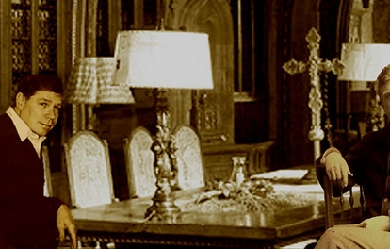
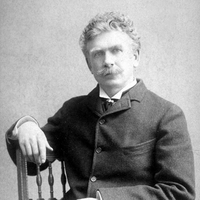
Ambrose Gwinnett Bierce (June 24, 1842– circa 1914) was an American Civil War soldier, wit, and writer. Bierce’s book The Devil’s Dictionary was named as one of “The 100 Greatest Masterpieces of American Literature” by the American Revolution Bicentennial Administration. His story An Occurrence at Owl Creek Bridge has been described as “one of the most famous and frequently anthologized stories in American literature”; and his book Tales of Soldiers and Civilians (also published as In the Midst of Life) was named by the Grolier Club as one of the 100 most influential American books printed before 1900.
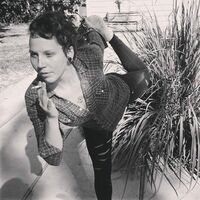
These are writings from the inner workings of a mind in constant thought about LIFE and everything it entails for the purpose of self-transcendence and with the intention to bring more understanding and healing to my own life and possibly those of others. My journey is one of self-exploration and discovery. Since my beliefs lie on the premise that we are so strongly connected to everything in existence, in getting to know myself I am getting to know the world. Learning about the world teaches me about myself. I find freedom in understanding and expression. My one true love is the paradox of questioning existence.
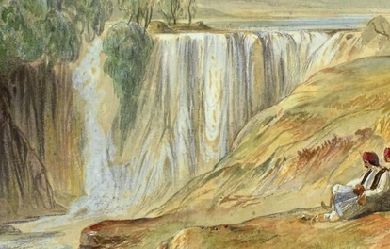
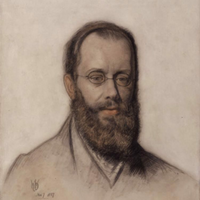
Edward Lear (12 or 13 May 1812 – 29 January 1888) was an English artist, illustrator, author and poet, and is known now mostly for his literary nonsense in poetry and prose and especially his limericks, a form he popularised. His principal areas of work as an artist were threefold: as a draughtsman employed to illustrate birds and animals; making coloured drawings during his journeys, which he reworked later, sometimes as plates for his travel books; as a (minor) illustrator of Alfred Tennyson's poems. As an author, he is known principally for his popular nonsense works, which use real and invented English words. Early years Lear was born into a middle-class family in the village of Holloway near London, the penultimate of twenty-one children (and youngest to survive) of Ann Clark Skerrett and Jeremiah Lear. He was raised by his eldest sister, also named Ann, 21 years his senior. Owing to the family's limited finances, Lear and his sister were required to leave the family home and live together when he was aged four. Ann doted on Edward and continued to act as a mother for him until her death, when he was almost 50 years of age. Lear suffered from lifelong health afflictions. From the age of six he suffered frequent grand mal epileptic seizures, and bronchitis, asthma, and during later life, partial blindness. Lear experienced his first seizure at a fair near Highgate with his father. The event scared and embarrassed him. Lear felt lifelong guilt and shame for his epileptic condition. His adult diaries indicate that he always sensed the onset of a seizure in time to remove himself from public view. When Lear was about seven years old he began to show signs of depression, possibly due to the instability of his childhood. He suffered from periods of severe melancholia which he referred to as "the Morbids.” Artist Lear was already drawing "for bread and cheese" by the time he was aged 16 and soon developed into a serious "ornithological draughtsman" employed by the Zoological Society and then from 1832 to 1836 by the Earl of Derby, who kept a private menagerie at his estate Knowsley Hall. Lear's first publication, published when he was 19 years old, was Illustrations of the Family of Psittacidae, or Parrots in 1830. His paintings were well received and he was compared favourably with the naturalist John James Audubon. Among other travels, he visited Greece and Egypt during 1848–49, and toured India and Ceylon (Sri Lanka) during 1873–75. While travelling he produced large quantities of coloured wash drawings in a distinctive style, which he converted later in his studio into oil and watercolour paintings, as well as prints for his books. His landscape style often shows views with strong sunlight, with intense contrasts of colour. Throughout his life he continued to paint seriously. He had a lifelong ambition to illustrate Tennyson's poems; near the end of his life a volume with a small number of illustrations was published. Relationships Lear's most fervent and painful friendship involved Franklin Lushington. He met the young barrister in Malta in 1849 and then toured southern Greece with him. Lear developed an undoubtedly homosexual passion for him that Lushington did not reciprocate. Although they remained friends for almost forty years, until Lear's death, the disparity of their feelings for one another constantly tormented Lear. Indeed, none of Lear's attempts at male companionship were successful; the very intensity of Lear's affections seemingly doomed the relationships. The closest he came to marriage with a woman was two proposals, both to the same person 46 years his junior, which were not accepted. For companions he relied instead on friends and correspondents, and especially, during later life, on his Albanian Souliote chef, Giorgis, a faithful friend and, as Lear complained, a thoroughly unsatisfactory chef. Another trusted companion in Sanremo was his cat, Foss, which died in 1886 and was buried with some ceremony in a garden at Villa Tennyson. San Remo and death Lear travelled widely throughout his life and eventually settled in Sanremo, on his beloved Mediterranean coast, in the 1870s, at a villa he named "Villa Tennyson". Lear was known to introduce himself with a long pseudonym: "Mr Abebika kratoponoko Prizzikalo Kattefello Ablegorabalus Ableborinto phashyph" or "Chakonoton the Cozovex Dossi Fossi Sini Tomentilla Coronilla Polentilla Battledore & Shuttlecock Derry down Derry Dumps" which he based on Aldiborontiphoskyphorniostikos. After a long decline in his health, Lear died at his villa in 1888, of the heart disease from which he had suffered since at least 1870. Lear's funeral was said to be a sad, lonely affair by the wife of Dr. Hassall, Lear's physician, none of Lear's many lifelong friends being able to attend. Lear is buried in the Cemetery Foce in San Remo. On his headstone are inscribed these lines about Mount Tomohrit (in Albania) from Tennyson's poem To E.L. [Edward Lear], On His Travels in Greece: all things fair. With such a pencil, such a pen. You shadow forth to distant men, I read and felt that I was there. The centenary of his death was marked in Britain with a set of Royal Mail stamps in 1988 and an exhibition at the Royal Academy. Lear's birthplace area is now marked with a plaque at Bowman's Mews, Islington, in London, and his bicentenary during 2012 was celebrated with a variety of events, exhibitions and lectures in venues across the world including an International Owl and Pussycat Day on his birthday. References Wikipedia – http://en.wikipedia.org/wiki/Edward_Lear
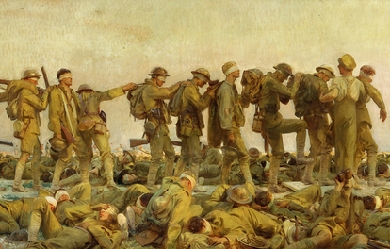
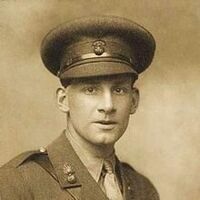
Siegfried Loraine Sassoon (8 September 1886 – 1 September 1967) was an English poet, author and soldier. Decorated for bravery on the Western Front, he became one of the leading poets of the First World War. His poetry both described the horrors of the trenches, and satirised the patriotic pretensions of those who, in Sassoon's view, were responsible for a vainglorious war. He later won acclaim for his prose work, notably his three-volume fictionalised autobiography, collectively known as the "Sherston Trilogy". Motivated by patriotism, Sassoon joined the British Army just as the threat of World War I was realised, and was in service with the Sussex Yeomanry on the day the United Kingdom declared war (4 August 1914). He broke his arm badly in a riding accident and was put out of action before even leaving England, spending the spring of 1915 convalescing.
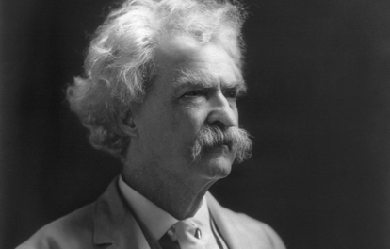

Samuel Langhorne Clemens (November 30, 1835– April 21, 1910), better known by his pen name Mark Twain, was an American writer, humorist, entrepreneur, publisher, and lecturer. Among his novels are The Adventures of Tom Sawyer (1876) and its sequel, the Adventures of Huckleberry Finn (1885), the latter often called “The Great American Novel”.

Rare & Strange...Lover of Wine, Sports, Skulls, The Sun, All Things Fast, Giving & Taking Chances, People Watching, Music, Poetry, Animals, Dialogue, Sensuality, Sexuality, Passion & Passionate People, Confidence, Art, Movies, Conversations, Romance, Philosophy & Johnny Depp.....Watching movies that make you think - like A waking life or with great dialogue. It's all about the lighting... What makes us different, you & I? I'm on my life mission of seeking the strange, yet the similar, the one who will make me think, make me not think, who will drive me wild with words, passion and love. I wear my heart on my sleeve and won't stop to let the world take away my spirit. I refuse to settle even if it means I never stop ...but I know he's out there my eclectic twin soul who will love adventure, random rants, giving and caring for others, fitting in between the cracks with me and standing out in the crowd too. Intelligent and Cultured , both city and country lover, who will pack up run through the mountains taking random photos of cemeteries and visions in the clouds, who will jump on a horse and ride a wild ride with me...a best friend, a soul mate, the other half who inspires me and I inspire he and long talks with large glasses of wine and endless nights in electric passion ...tantric, twisted, non-judging just accepting each other completely, swallowing each other ...
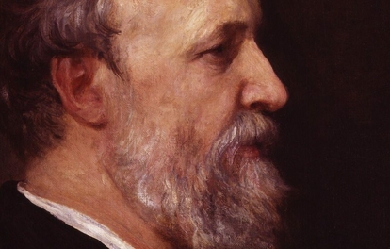
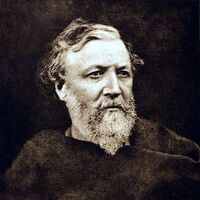
Robert Browning was born on May 7, 1812, in Camberwell, England. His mother was an accomplished pianist and a devout evangelical Christian. His father, who worked as a bank clerk, was also an artist, scholar, antiquarian, and collector of books and pictures. His rare book collection of more than 6,000 volumes included works in Greek, Hebrew, Latin, French, Italian, and Spanish. Much of Browning's education came from his well-read father. It is believed that he was already proficient at reading and writing by the age of five. A bright and anxious student, Browning learned Latin, Greek, and French by the time he was fourteen. From fourteen to sixteen he was educated at home, attended to by various tutors in music, drawing, dancing, and horsemanship.
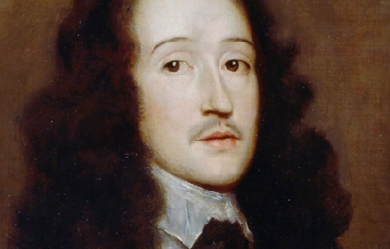
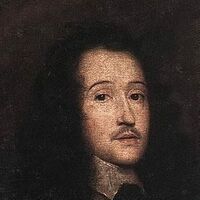
Richard Lovelace (1618–1657) was an English poet in the seventeenth century. He was a cavalier poet who fought on behalf of the king during the Civil war. His best known works are To Althea, from Prison, and To Lucasta, Going to the Warres. Early life and family Richard Lovelace was born in 1618. His exact birthplace is unknown, but it is documented that it was either Woolwich, Kent, or Holland. He was the oldest son of Sir William Lovelace and Anne Barne Lovelace and had four brothers and three sisters. His father was from an old distinguished military and legal family and the Lovelace family owned a considerable amount of property in Kent. His father, Sir William Lovelace, knt., was a member of the Virginia Company and an incorporator in the second Virginia Company in 1609. He was a soldier and he died during the war with Spain and Holland in the siege of Grol, a few days before the town fell. Richard was only 9 years old when his father died. Richard's father was the son of Sir William Lovelace and Elizabeth Aucher who was the daughter of Mabel Wroths and Edward Aucher, Esq. who inherited, under his father's Will, the manors of Bishopsbourne and Hautsborne. Elizabeth's nephew was Sir Anthony Aucher (1614 – 31 May 1692) an English politician and Cavalier during the English Civil War. He was the son of her brother Sir Anthony Aucher and his wife Hester Collett. Richard Lovelace's mother, Anne Barne (1587–1633), was the daughter of Sir William Barne and the granddaughter of Sir George Barne III (1532- d. 1593), the Lord Mayor of London and a prominent merchant and public official from London during the reign of Elizabeth I; and Anne Gerrard, daughter of Sir William Garrard, who was Lord Mayor of London in 1555. Richard Lovelace's mother was also the daughter of Anne Sandys and the granddaughter of Cicely Wilford and the Most Reverend Dr. Edwin Sandys, an Anglican church leader who successively held the posts of the Bishop of Worcester (1559–1570), Bishop of London (1570–1576), and the Archbishop of York (1576–1588). He was one of the translators of the Bishops' Bible. Anne Barne Lovelace married as her second husband, on 20 January 1630, at Greenwich, England, the Very Rev. Dr. Jonathan Browne They were the parents of one child, Anne Browne, who married Herbert Crofte, S.T.P. and D.D and were the parents of Sir Herbert Croft, 1st Baronet. His brother, Francis Lovelace (1621–1675), was the second governor of the New York colony appointed by the Duke of York, later King James II of England. He was also the great nephew of both George Sandys (2 March 1577 – March 1644), an English traveller, colonist and poet; and of Sir Edwin Sandys (9 December 1561 – October 1629), an English statesman and one of the founders of the London Company. In 1629, when Lovelace was eleven, he went to Sutton’s Foundation at Charterhouse School, then located in London. However, there is not a clear record that Lovelace actually attended because it is believed that he studied as a “boarder” because he did not need financial assistance like the “scholars”. He spent five years at Charterhouse, three of which were spent with Richard Crashaw, who also became a poet. On 5 May 1631, Lovelace was sworn in as a “Gentleman Wayter Extraordinary” to the King. This was an “honorary position for which one paid a fee”. He then went on to Gloucester Hall, Oxford, in 1634. Collegiate career Richard Lovelace attended Oxford University and he was praised by one of his contemporaries, Anthony Wood. for being “the most amiable and beautiful person that ever eye beheld; a person also of innate modesty, virtue and courtly deportment, which made him then, but especially after, when he retired to the great city, much admired and adored by the female sex" At the age of eighteen, during a three-week celebration at Oxford, he was granted the degree of Master of Arts. While at school, he tried to portray himself more as a social connoisseur rather than a scholar, continuing his image of being a Cavalier. Being a Cavalier poet, Lovelace wrote to praise a friend or fellow poet, to give advice in grief or love, to define a relationship, to articulate the precise amount of attention a man owes a woman, to celebrate beauty, and to persuade to love. Lovelace wrote a comedy, 'The Scholars,' and a tragedy titled 'The Soldiers,' while at Oxford. He then left for Cambridge University for a few months where he met Lord Goring, who led him into political trouble. Politics and prison Lovelace’s poetry was often influenced by his experiences with politics and association with important figures of his time. At the age of thirteen, Lovelace became a "Gentlemen Wayter Extraordinary" to the King and at nineteen he contributed a verse to a volume of elegies commemorating Princess Katharine. In 1639 Lovelace joined the regiment of Lord Goring, serving first as a senior ensign and later as a captain in the Bishops’ Wars. This experience inspired the 'Sonnet. To Generall Goring.' Upon his return to his home in Kent in 1640, Lovelace served as a country gentleman and a justice of the peace where he encountered firsthand the civil turmoil regarding religion and politics. In 1641 Lovelace led a group of men to seize and destroy a petition for the abolition of Episcopal rule, which had been signed by fifteen thousand people. The following year he presented the House of Commons with Dering’s pro-Royalist petition which was supposed to have been burned. These actions resulted in Lovelace’s first imprisonment. Shortly thereafter, he was released on bail with the stipulation that he avoid communication with the House of Commons without permission. This prevented Lovelace, who had done everything to prove himself during the Bishops’ Wars, from participating in the first phase of the English Civil War. However, this first experience of imprisonment did result in some good, as it brought him to write one of his finest and most beloved lyrics, 'To Althea, from Prison,' in which he illustrates his noble and paradoxical nature. Lovelace did everything he could to remain in the king’s favor despite his inability to participate in the war. Richard Lovelace did his part again during the political chaos of 1648, though it is unclear specifically what his actions were. He did, however, manage to warrant himself another prison sentence; this time for nearly a year. When he was released in April 1649, the king had been executed and Lovelace’s cause seemed lost. As in his previous incarceration, this experience led to creative production—this time in the form of spiritual freedom, as reflected in the release of his first volume of poetry, Lucasta. Literature Richard Lovelace first started writing while he was a student at Oxford and wrote almost 200 poems from that time until his death. His first work was a drama titled The Scholars. The play was never published; however, it was performed at college and then in London. In 1640, he wrote a tragedy titled 'The Soldier' which was based on his own military experience. When serving in the Bishops' Wars, he wrote the sonnet 'To Generall Goring,' which is a poem of Bacchanalian celebration rather than a glorification of military action. One of his extremely famous poems is 'To Lucasta, Going to the Warres,' written in 1640 and exposed in his first political action. During his first imprisonment in 1642, he wrote his most famous poem 'To Althea, From Prison.' Later on that year during his travels to Holland with General Goring, he wrote 'The Rose,' following with 'The Scrutiny' and on 14 May 1649, 'Lucasta' was published. He also wrote poems analyzing the details of many simple insects. 'The Ant,' 'The Grasse-hopper,' 'The Snayl,' 'The Falcon,' 'The Toad and Spyder.' Of these poems, 'The Grasse-hopper' is his most well-known. In 1660, after Lovelace died, "Lucasta: Postume Poems" was published; it contains 'A Mock-Song,' which has a much darker tone than his previous works. William Winstanley, who praised much of Richard Lovelace's works, thought highly of him and compared him to an idol; "I can compare no Man so like this Colonel Lovelace as Sir Philip Sidney,” of which it is in an Epitaph made of him; Nor is it fit that more I should aquaint Lest Men adore in one A Scholar, Souldier, Lover, and a Saint His most quoted excerpts are from the beginning of the last stanza of To Althea, From Prison: Stone walls do not a prison make, Nor iron bars a cage; Minds innocent and quiet take That for an hermitage and the end of To Lucasta. Going to the Warres: I could not love thee, dear, so much, Lov'd I not Honour more. Chronology 1618- Richard Lovelace born, either in Woolwich, Kent, or in Holland. 1629- King Charles I nominated “Thomas [probably Richard] Lovelace,” upon petition of Lovelace’s mother, Anne Barne Lovelace, to Sutton’s foundation at Charterhouse. 1631- On 5 May, Lovelace is made “Gentleman Wayter Extraordinary” to the King. 1634- On 27 June, he matriculates as Gentleman Commoner at Gloucester Hall, Oxford. 1635- Writes a comedy, The Scholars. 1636- On 31 August, the degree of M.A. is presented to him. 1637- On 4 October, he enters Cambridge University. 1638-1639- His first printed poems appear: ‘An Elegy” on Princess Katherine; prefaces to several books. 1639- He is senior ensign in General Goring’s regiment - in the First Scottish Expedition. “Sonnet to Goring.” 1640- Commissioned captain in the Second Scottish Expedition; writes a tragedy, The Soldier. He then returns home at 21, into the possession of his family’s property. 1641- Lovelace tears up a pro-Parliament, anti-Episcopacy petition at a meeting in Maidstone, Kent. 1642- 30 April, he presents the anti-Parliamentary Petition of Kent and is imprisoned at Gatehouse. After appealing, he is released on bail, 21 June. The Civil war begins on 22 August, he writes “To Althea, from Prison,” “To Lucasta.” In September, he goes to Holland with General Goring. He writes “The Rose.” 1642-1646-Probably serves in Holland and France with General Goring. He writes “The Scrutiny.” 1643- Sells some of his property to Richard Hulse. 1646- In October, he is wounded at Dunkirk, while fighting under the Great Conde against the Spaniards. 1647- He is admitted to the Freedom at the Painters’ Company. 1648-On 4 February, Lucasta is licensed at the Stationer’s Register. On 9 June, Lovelace is again imprisoned at Peterhouse. 1649- On 9 April, he is released from jail. He then sells the remaining family property and portraits to Richard Hulse. On 14 May, Lucasta is published. 1650-1657- Lovelace’s whereabouts unknown, though various poems are written. 1657- Lovelace dies. 1659-1660- Lucasta, Postume Poems is published. References Wikipedia - http://en.wikipedia.org/wiki/Richard_Lovelace
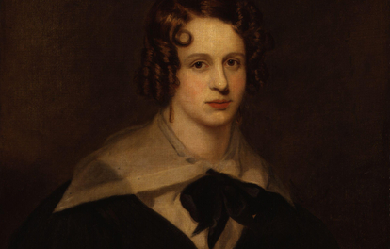
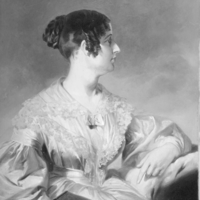
Felicia Dorothea Hemans (25 September 1793 – 16 May 1835) was an English poet. Her first poems, dedicated to the Prince of Wales, were published in Liverpool in 1808, when she was fourteen, arousing the interest of poet Percy Bysshe Shelley, who briefly corresponded with her. She quickly followed them up with “England and Spain” (1808) and “The Domestic Affections” (1812).
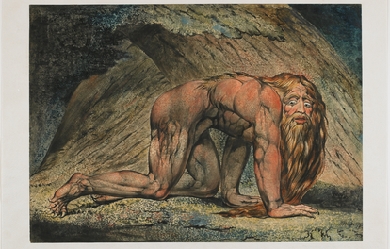
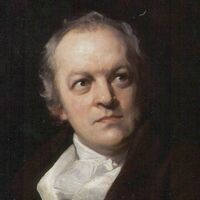
William Blake (28 November 1757 – 12 August 1827) was an English poet, painter, and printmaker. Largely unrecognised during his lifetime, Blake is now considered a seminal figure in the history of both the poetry and visual arts of the Romantic Age. His prophetic poetry has been said to form “what is in proportion to its merits the least read body of poetry in the English language”. His visual artistry has led one contemporary art critic to proclaim him “far and away the greatest artist Britain has ever produced”. Although he lived in London his entire life except for three years spent in Felpham he produced a diverse and symbolically rich corpus, which embraced the imagination as “the body of God”, or “Human existence itself”.
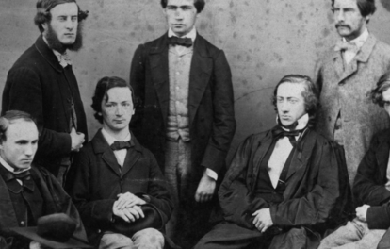
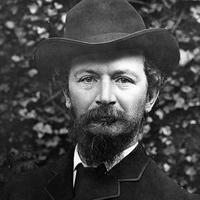
Algernon Charles Swinburne (5 April 1837– 10 April 1909) was an English poet, playwright, novelist, and critic. He wrote several novels and collections of poetry such as Poems and Ballads, and contributed to the famous Eleventh Edition of the Encyclopædia Britannica. A controversial figure at the time, Swinburne was a sado-masochist and alcoholic and was obsessed with the Middle Ages and lesbianism. Swinburne wrote about many taboo topics, such as lesbianism, cannibalism, sado-masochism, and anti-theism. His poems have many common motifs, such as the Ocean, Time, and Death. Several historical people are featured in his poems, such as Sappho ("Sapphics"), Anactoria ("Anactoria"), Jesus ("Hymn to Proserpine": Galilaee, La. “Galilean”) and Catullus ("To Catullus"). Biography Swinburne was born at 7 Chester Street, Grosvenor Place, London, on 5 April 1837. He was the eldest of six children born to Captain (later Admiral) Charles Henry Swinburne (1797–1877) and Lady Jane Henrietta, daughter of the 3rd Earl of Ashburnham. He grew up at East Dene in Bonchurch on the Isle of Wight. He attended Eton College (1849–53), where he first started writing poetry, and then Balliol College, Oxford (1856–60) with a brief hiatus when he was rusticated from the university in 1859 for having publicly supported the attempted assassination of Napoleon III by Felice Orsini. He returned in May 1860, though he never received a degree. He spent summer holidays at Capheaton Hall in Northumberland, the house of his grandfather, Sir John Swinburne, 6th Baronet (1762–1860), who had a famous library and was President of the Literary and Philosophical Society in Newcastle upon Tyne. Swinburne considered Northumberland to be his native county, an emotion reflected in poems like the intensely patriotic 'Northumberland’, 'Grace Darling’ and others. He enjoyed riding his pony across the moors (he was a daring horseman) 'through honeyed leagues of the northland border’, as he called the Scottish border in his Recollections. In the period 1857–60, Swinburne became one of Lady Pauline Trevelyan’s intellectual circle at Wallington Hall. After his grandfather’s death in 1860, he stayed with William Bell Scott in Newcastle. In 1861, Swinburne visited Menton on the French Riviera to recover from excessive use of alcohol, staying at the Villa Laurenti. From Menton, Swinburne travelled to Italy, where he journeyed extensively. In December 1862, Swinburne accompanied Scott and his guests, probably including Dante Gabriel Rossetti, on a trip to Tynemouth. Scott writes in his memoirs that, as they walked by the sea, Swinburne declaimed the as yet unpublished 'Hymn to Proserpine’ and 'Laus Veneris’ in his lilting intonation, while the waves 'were running the whole length of the long level sands towards Cullercoats and sounding like far-off acclamations’. At Oxford, Swinburne met several Pre-Raphaelites, including Dante Gabriel Rossetti. He also met William Morris. After leaving college, he lived in London and started an active writing career, where Rossetti was delighted with his 'little Northumbrian friend’, probably a reference to Swinburne’s diminutive height—he was just five foot four. Swinburne was an alcoholic and algolagniac and highly excitable. He liked to be flogged. His health suffered; and, in 1879 at the age of 42, he was taken into care by his friend, lawyer Theodore Watts, who looked after him for the rest of his life at The Pines, 11 Putney Hill, Putney SW15. Thereafter, he lost his youthful rebelliousness and developed into a figure of social respectability. It was said of Watts that he saved the man and killed the poet. Swinburne died at the Pines on 10 April 1909 at the age of 72 and was buried at St. Boniface Church, Bonchurch on the Isle of Wight. Reception Swinburne is considered a poet of the decadent school, although he perhaps professed to more vice than he actually indulged in to advertise his deviance– he spread a rumour that he had had sex with, then eaten, a monkey; Oscar Wilde stated that Swinburne was “a braggart in matters of vice, who had done everything he could to convince his fellow citizens of his homosexuality and bestiality without being in the slightest degree a homosexual or a bestialiser.” Many critics consider his mastery of vocabulary, rhyme and metre impressive, although he has also been criticised for his florid style and word choices that only fit the rhyme scheme rather than contributing to the meaning of the piece. He is the virtual star of the third volume of George Saintsbury’s famous History of English Prosody, and A. E. Housman, a more measured and even somewhat hostile critic, had great praise for his rhyming ability: [Swinburne] possessed an altogether unexampled command of rhyme, the chief enrichment of modern verse. The English language is comparatively poor in rhymes, and most English poets, when they have to rhyme more than two or three words together, betray their embarrassment. They betray it, for instance, when they write sonnets after the strict Petrarchian rule: the poetical inferiority of most English sonnets, if compared with what their own authors have achieved in other forms of verse, is largely though not entirely the result of this difficulty. [...] To Swinburne the sonnet was child’s play: the task of providing four rhymes was not hard enough, and he wrote long poems in which each stanza required eight or ten rhymes, and wrote them so that he never seemed to be saying anything for the rhyme’s sake. Swinburne’s work was once quite popular among undergraduates at Oxford and Cambridge, though today it has gone out of fashion. This is at least somewhat contextual, as it tends to mirror the popular and academic consensus regarding his work, although his Poems and Ballads, First Series and his Atalanta in Calydon have never been out of critical favour. Atalanta in Calydon in particular has been lauded as one of his best early works, written in 1865, before the passionate excesses of later works earned him a sordid reputation for blasphemy and depravity among contemporary critics. T. S. Eliot read Swinburne’s essays on the Shakespearean and Jonsonian dramatists in The Contemporaries of Shakespeare and The Age of Shakespeare and Swinburne’s books on Shakespeare and Jonson. Writing on Swinburne in 'The Sacred Wood: Essays on Poetry and Criticism’, Eliot said, of Swinburne, he had mastered his material, writing 'he is more reliable to them than Hazlitt, Coleridge, or Lamb: and his perception of relative values is almost always correct’. However, Eliot judged Swinburne did not master it to the extent of being able to take liberties with it, which is everything. Furthermore, Eliot disliked Swinburne’s prose, about which he wrote “the tumultuous outcry of adjectives, the headstrong rush of undisciplined sentences, are the index to the impatience and perhaps laziness of a disorderly mind.” Swinburne was nominated for the Nobel Prize in Literature every year from 1903 to 1907 and again in 1909. H. P. Lovecraft considered Swinburne “the only real poet in either England or America after the death of Mr. Edgar Allan Poe.” Work Swinburne’s poetic works include: Atalanta in Calydon (1865), Poems and Ballads (1866), Songs before Sunrise (1871), Poems and Ballads Second Series, (1878) Tristram of Lyonesse (1882), Poems and Ballads Third Series (1889), and the novel Lesbia Brandon (published posthumously in 1952). Poems and Ballads caused a sensation when it was first published, especially the poems written in homage of Sappho of Lesbos such as “Anactoria” and “Sapphics”: Moxon and Co. transferred its publication rights to John Camden Hotten. Other poems in this volume such as “The Leper,” “Laus Veneris,” and “St Dorothy” evoke a Victorian fascination with the Middle Ages, and are explicitly mediaeval in style, tone and construction. Also featured in this volume are “Hymn to Proserpine”, “The Triumph of Time” and “Dolores (Notre-Dame des Sept Douleurs)”. Swinburne devised the poetic form called the roundel, a variation of the French Rondeau form, and some were included in A Century of Roundels dedicated to Christina Rossetti. Swinburne wrote to Edward Burne-Jones in 1883: "I have got a tiny new book of songs or songlets, in one form and all manner of metres... just coming out, of which Miss Rossetti has accepted the dedication. I hope you and Georgie [his wife Georgiana, one of the MacDonald sisters] will find something to like among a hundred poems of nine lines each, twenty-four of which are about babies or small children". Opinions of these poems vary between those who find them captivating and brilliant, to those who find them merely clever and contrived. One of them, A Baby’s Death, was set to music by the English composer Sir Edward Elgar as the song Roundel: The little eyes that never knew Light. Swinburne was influenced by the work of William Shakespeare, Percy Bysshe Shelley, Catullus, William Morris, Dante Gabriel Rossetti, Robert Browning, Alfred Lord Tennyson, and Victor Hugo. While he was popular in England during his life, Swinburne’s influence has greatly decreased since his death. After the first Poems and Ballads, Swinburne’s later poetry was devoted more to philosophy and politics, including the unification of Italy, particularly in the volume Songs before Sunrise. He did not stop writing love poetry entirely, including his great epic-length poem, Tristram of Lyonesse, but its content is much less shocking. His versification, and especially his rhyming technique, remain in top form to the end. Verse drama The Queen Mother (1860) Rosamond (1860) Chastelard (1865) Bothwell (1874) Mary Stuart (1881) Marino Faliero (1885) Locrine (1887) The Sisters (1892) Rosamund, Queen of the Lombards (1899) Poetry Atalanta in Calydon (1865)† Poems and Ballads (1866) Songs Before Sunrise (1871) Songs of Two Nations (1875) Erechtheus (1876)† Poems and Ballads, Second Series (1878) Songs of the Springtides (1880) Studies in Song (1880) The Heptalogia, or the Seven against Sense. A Cap with Seven Bells (1880) Tristam of Lyonesse (1882) A Century of Roundels (1883) A Midsummer Holiday and Other Poems (1884) Poems and Ballads, Third Series (1889) Astrophel and Other Poems (1894) The Tale of Balen (1896) A Channel Passage and Other Poems (1904) ^† Although formally tragedies, Atlanta in Calydon and Erechtheus are traditionally included with “poetry”. Criticism William Blake: A Critical Essay (1868, new edition 1906) Under the Microscope (1872) George Chapman: A Critical Essay (1875) Essays and Studies (1875) A Note on Charlotte Brontë (1877) A Study of Shakespeare (1880) A Study of Victor Hugo (1886) A Study of Ben Johnson (1889) Studies in Prose and Poetry (1894) The Age of Shakespeare (1908) Shakespeare (1909) Major collections The poems of Algernon Charles Swinburne, 6 vols. London: Chatto & Windus, 1904. The Tragedies of Algernon Charles Swinburne, 5 vols. London: Chatto & Windus, 1905. The Complete Works of Algernon Charles Swinburne, ed. Sir Edmund Gosse and Thomas James Wise, 20 vols. Bonchurch Edition; London and New York: William Heinemann and Gabriel Wells, 1925-7. The Swinburne Letters, ed. Cecil Y. Lang, 6 vols. 1959-62. Ancestry References Wikipedia—https://en.wikipedia.org/wiki/Algernon_Charles_Swinburne
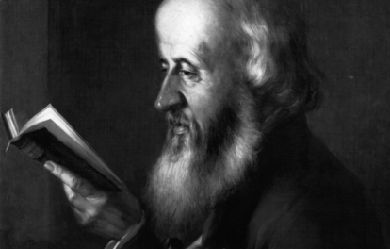
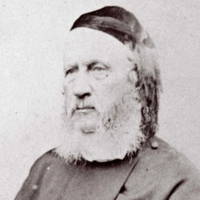
William Barnes (22 February 1801– 7 October 1886) was an English writer, poet, Church of England priest, and philologist. He wrote over 800 poems, some in Dorset dialect, and much other work, including a comprehensive English grammar quoting from more than 70 different languages. Barnes was born at Rushay in the parish of Bagber, Dorset, the son of a farmer. His formal education finished when he was 13 years old. Between 1818 and 1823 he worked in Dorchester, the county town, as a solicitor’s clerk, then moved to Mere in neighbouring Wiltshire and opened a school. During his time here he began writing poetry in the Dorset dialect, as well as studying several languages (Italian, Persian, German and French, in addition to Greek and Latin), playing musical instruments (violin, piano and flute) and practising wood-engraving. He married Julia Miles, the daughter of an exciseman from Dorchester, in 1827, then in 1835 moved back to the county town, where again he ran a school. The school was initially in Durngate Street, then was moved to South Street. A second move to another South Street site made the school a neighbour of an architect’s practice where Thomas Hardy was an apprentice. The architect, John Hicks, was interested in literature and the classics, and when disputes about grammar occurred in the practice, Hardy would visit Barnes next door for an authoritative opinion.
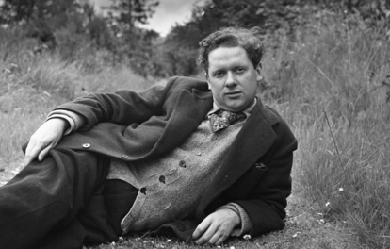

Dylan Marlais Thomas (27 October 1914 – 9 November 1953) was a Welsh poet and writer who wrote exclusively in English. In addition to poetry, he wrote short stories and scripts for film and radio, which he often performed himself. His public readings, particularly in America, won him great acclaim; his sonorous voice with a subtle Welsh lilt became almost as famous as his works. His best-known works include the “play for voices” Under Milk Wood and the celebrated villanelle for his dying father, “Do not go gentle into that good night”. Appreciative critics have also noted the craftsmanship and compression of poems such as “In my Craft or Sullen Art”, and the rhapsodic lyricism in “And death shall have no dominion” and “Fern Hill”.

I started dabbling at age 13, and after a while, I was writing full poems, however, I only have poetry from when I was 16 and up. I am now 28, and I have found that it is so much easier to say things through poetry than it is to verbalize them. I draw inspiration for my poetry from writers, musicians, movies, daily interactions, my faith, and much more. As far as writers go, when I was younger I got introduced to Langston Hughes, and I have learned to take from his style of writing. I also enjoy some good old Shakespeare every once in a while. Most of my influence, however, comes from music; I draw my influence from genres that include but are not limited to, hip-hop, folk, rock, and country. Another thing that really impacts my poetry are events that have taken place in my life. Movie characters and themes also have a chance to have their fair share of influence in my poetry. I am a Christ-follower first and foremost, so, beneath most of my poems stories, there is a spiritual undertone. My plainly faith-based poems, however, are a written (hard) memory of the headspace that I was in at that time in my life. People can create all sorts of art without having to fabricate who they are, and without compromising who they are as a person; it's being able to take from other peoples experiences and write about them, based on the writer's interpretation, that can set a writer apart from others. I write mainly Free Verse poetry, because to me poetry is a lot of self-expression, and if I were to follow the set guidelines of a certain type of poetry, I would then be forfeiting my creative license. Sometimes, however, I like to take from certain styles of poetry, especially when I am trying to convey a particular emotion, for example, I not only write Free Verse but, I also have learned to take from styles, such as Blank Verse & Limericks. I have a friend who said this, "If there is one thing I have learned about writing over the years it is that the best work comes from writing without the audience in mind." I find this quote to be accurate for not only my writing but for writing in general. Love y'all!
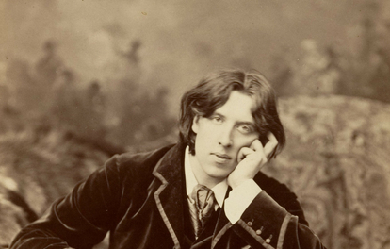
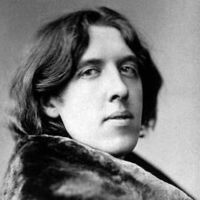
Oscar Fingal O'Flahertie Wills Wilde (16 October 1854 – 30 November 1900) was an Irish writer and poet. After writing in different forms throughout the 1880s, he became one of London's most popular playwrights in the early 1890s. Today he is remembered for his epigrams, plays and the circumstances of his imprisonment, followed by his early death. At the turn of the 1890s, he refined his ideas about the supremacy of art in a series of dialogues and essays, and incorporated themes of decadence, duplicity, and beauty into his only novel, The Picture of Dorian Gray (1890). The opportunity to construct aesthetic details precisely, and combine them with larger social themes, drew Wilde to write drama. He wrote Salome (1891) in French in Paris but it was refused a licence. Unperturbed, Wilde produced four society comedies in the early 1890s, which made him one of the most successful playwrights of late Victorian London.
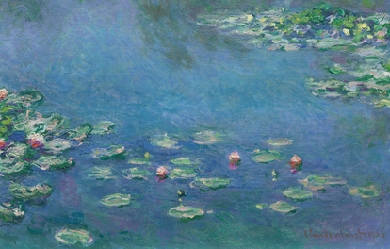
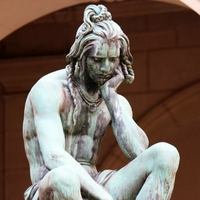
“L'amour n'est pas un feu qu'on renferme dans une âme : Tout nous trahit, la voix, le silence, les yeux; Et les feux mal couverts n'en éclatent que mieux.”Racine Love is not a fire that one encloses in a soul: Everything betrays us, the voice, the silence, the eyes; And poorly covered fires only break out better. ” Racine



